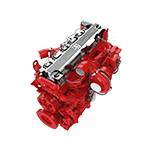Aug . 19, 2024 14:16 Back to list
Understanding Rear Brake Drum Shoe Function and Maintenance Tips
Understanding Rear Brake Drum Shoes Importance and Maintenance
When it comes to vehicle safety, the braking system is paramount. Among its components, rear brake drum shoes play a crucial role in ensuring that your vehicle stops effectively and safely. While many drivers may not know much about them, understanding their function, importance, and maintenance can empower vehicle owners to make informed decisions regarding their car’s care.
What are Rear Brake Drum Shoes?
Rear brake drum shoes are part of a drum brake system, commonly found in older vehicles and some modern models, especially in the rear braking setup. Unlike disc brakes, which use a rotor and caliper, drum brakes operate using curved shoes that press against the inside of a drum to slow down the vehicle. When the brake pedal is pressed, hydraulic pressure activates the brake shoes, causing them to expand outward and press against the drum. This creates friction, which ultimately slows and stops the vehicle.
Importance of Rear Brake Drum Shoes
The importance of rear brake drum shoes cannot be overstated. They not only play a vital role in the overall braking system but also contribute to the vehicle's stability and handling. Effective braking is crucial for both safety and performance; worn or damaged brake shoes can lead to reduced stopping power, increased stopping distances, and a higher risk of accidents. Furthermore, because rear brake systems often bear a significant portion of the vehicle’s weight, maintaining these components in good working condition is essential to avoid uneven braking and potential loss of control.
Signs of Wear and How to Maintain Them
rear brake drum shoes

Regular maintenance of rear brake drum shoes is essential for safe driving. As these components undergo regular wear and tear, it’s important to be alert to signs indicating they may need inspection or replacement. Common signs include
1. Squeaking or Grinding Noises If you hear unusual noises when applying the brakes, it could indicate worn shoes or debris caught in the drum. 2. Reduced Braking Performance If you notice the vehicle taking longer to stop or requiring more pressure on the pedal, it may be time to check the brake shoes.
3. Vibration or Pulling If the car shakes during braking or pulls to one side, this could suggest uneven wear or a problem with the brake system.
4. Dashboard Warning Lights Many modern vehicles come equipped with warning systems that signal when brake maintenance is required.
To maintain rear brake drum shoes effectively, several steps can be taken. Regular inspections, ideally every 20,000 to 30,000 miles, can reveal early signs of wear. When replacements or repairs are necessary, it's advisable to have the entire braking system checked, including the drums, to ensure they are also in good condition. Additionally, periodic cleaning of the brake components can prevent dirt and debris buildup, which can lead to premature wear.
Conclusion
In conclusion, rear brake drum shoes are an essential component of your vehicle’s braking system, with significant implications for safety and performance. Understanding their function, recognizing signs of wear, and adhering to regular maintenance can help ensure that your vehicle remains safe and reliable on the road. By investing time and attention into your braking system, you not only enhance your driving experience but also protect yourself and others from potential hazards associated with braking failure. Remember, a well-maintained brake system can be the difference between a safe trip and an accident; therefore, don’t overlook the importance of rear brake drum shoes.
-
IVEKO High-Performance Brake Drums Durable & Precision-Engineered
NewsMay.17,2025
-
Brake Drum Man High-Quality Drum Brake & Shoe Solutions
NewsMay.17,2025
-
Brake Drum Man Premium Drum Brake & Shoe Solutions OEM-Compliant
NewsMay.16,2025
-
Brake Drum Man High-Quality Drum Brake & Shoe Kits for Vehicles
NewsMay.16,2025
-
Brake Drum Man High-Quality Drum Brake Parts & Expert Solutions
NewsMay.16,2025
-
Brake Drum Man High-Quality Drum Brake & Shoe Solutions
NewsMay.15,2025
